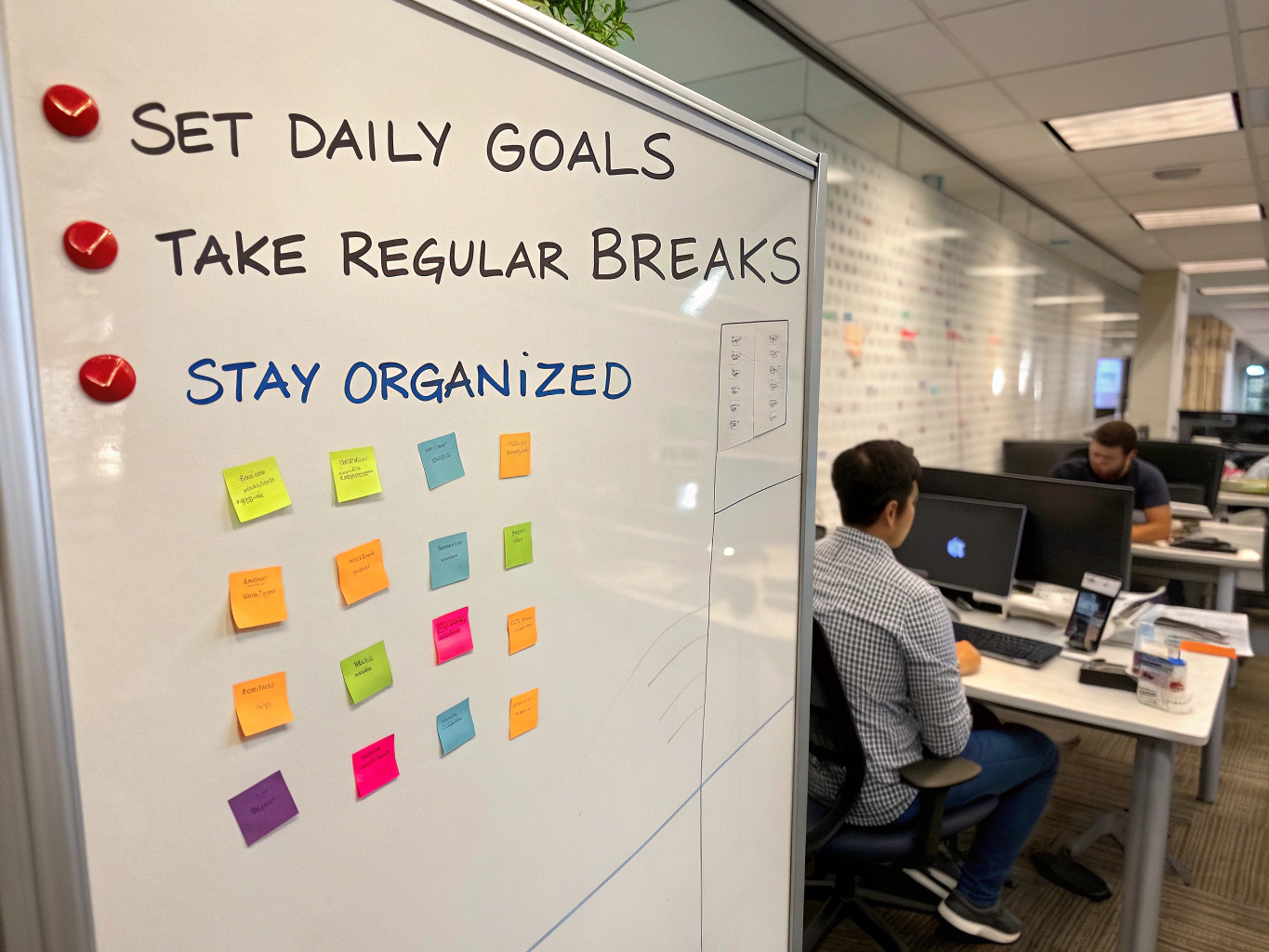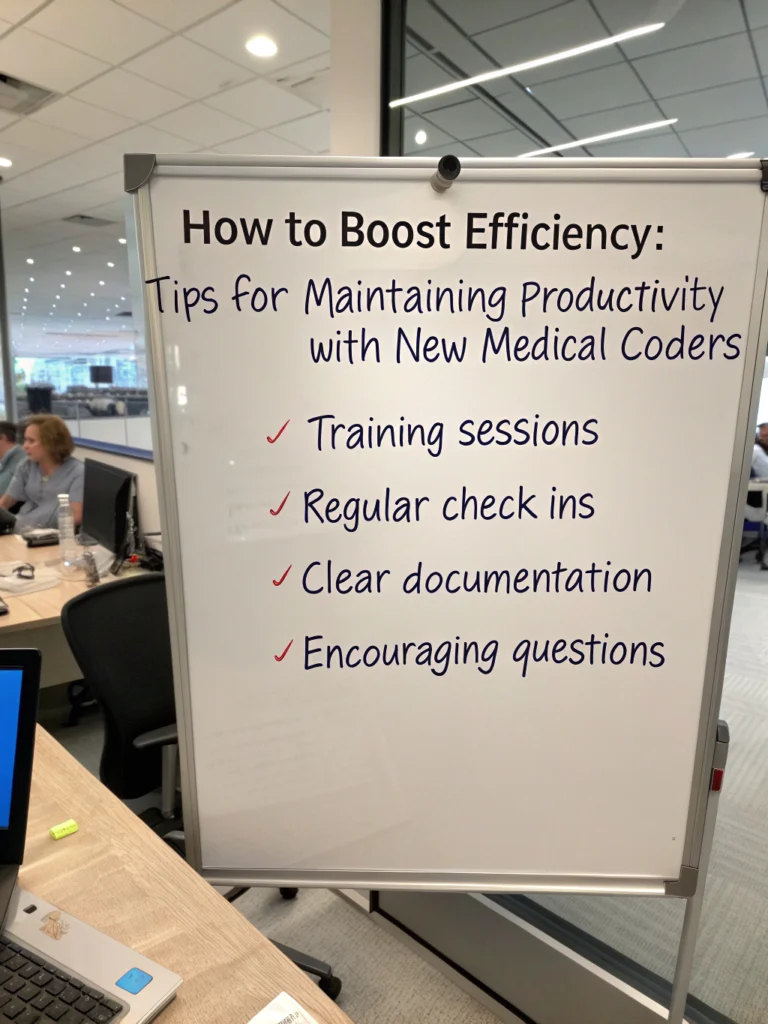How to Boost Efficiency: Tips for Maintaining Productivity with New Medical Coders
Are you struggling to maintain medical coding productivity when bringing new team members on board? You're not alone. The learning curve for medical coding can be steep, and balancing quality with speed is a constant challenge.
Finding the right balance between training new coders and maintaining department efficiency is something I've helped dozens of medical organizations solve over the years.
Today, I'll share practical, proven strategies that will help you integrate new coders while keeping your productivity numbers strong.
The Onboarding Challenge: Why New Coders Impact Productivity
When you're onboarding medical coders, productivity almost always takes a temporary hit. This happens for several reasons:
- New coders typically work at 50-60% of the speed of experienced staff
- Senior staff must divert time to training and mentoring
- Error rates increase, requiring more quality checks and rework
- Adapting to your specific workflow and software takes time
The key is to minimize this dip while setting up your new hires for long-term success.
Creating an Effective Onboarding Program
A structured onboarding program is essential for maintaining productivity. Here's how to build one that works:
1. Establish Clear Expectations and Metrics
Set progressive productivity targets for new hires:
- Week 1-2: Focus on accuracy over speed (quality benchmark)
- Week 3-4: 50% of standard productivity
- Week 5-8: 70% of standard productivity
- Week 9-12: 85% of standard productivity
- After 90 days: Full productivity benchmarks apply
Being transparent about these expectations helps new coders understand the journey ahead.
2. Implement a Buddy System
Pair each new coder with an experienced mentor who can:
- Provide real-time feedback
- Answer questions quickly
- Share institutional knowledge
- Demonstrate efficient workflows
This approach reduces training bottlenecks and spreads the mentoring load across your team.
Implement effective productivity systems to keep both mentors and mentees on track during this process.
Streamlining the Learning Curve
The faster new coders can reach proficiency, the less impact on your overall medical coding productivity. These strategies can help:
1. Develop a Specialized Starter Workflow
Rather than overwhelming new coders with every case type:
- Start with less complex, high-volume cases
- Gradually introduce more complex coding scenarios
- Create specialized work queues for new coders
- Build confidence through early wins
This focused approach leads to faster mastery and reduces errors.

2. Leverage Technology and Tools
The right tools can dramatically improve medical coding workflow for new team members:
- Create detailed process documentation with screenshots
- Develop coding cheat sheets for common scenarios
- Implement coding assistants and auto-suggestions where appropriate
- Use screen recording software to capture expert workflows
These resources help new coders become self-sufficient faster, reducing the drain on experienced staff.
For maximum efficiency, consider exploring the >AI for Productivity eBook + Checklist: Supercharge Your Efficiency in 2206 which offers cutting-edge tools for automating repetitive tasks.
Productivity Strategies for Your Existing Team
While new coders get up to speed, implementing these productivity strategies for coders can help your existing team maintain output:
1. Redistribute Complex Cases
Temporarily shift the most challenging cases to your most experienced coders. This:
- Maximizes efficiency on difficult work
- Reduces quality issues
- Allows new coders to focus on mastering basics
2. Invest in Short-Term Support
Consider these temporary measures:
- Bring in contract coders during training periods
- Authorize limited overtime for experienced staff
- Schedule training during traditionally slower periods
- Leverage remote coding teams to handle overflow
Strategic productivity planning can help you manage these temporary resources most efficiently.
Effective Medical Coding Team Management
Medical coding team management requires a balanced approach, especially when integrating new coders:
1. Monitor Metrics Strategically
Track these key performance indicators:
- Productivity rates (accounts per hour)
- Accuracy percentages
- Denial rates
- Questions asked (decreasing over time)
- Time spent in different coding modules
Use these metrics to identify where additional training or support might be needed, but avoid creating undue pressure.
2. Create a Culture of Continuous Improvement
Even as you boost efficiency in medical coding, maintain focus on quality:
- Schedule regular coding huddles to discuss challenging cases
- Share coding updates and industry changes
- Celebrate improvements and milestone achievements
- Implement peer review as a learning tool, not punishment
Organizations with strong learning cultures typically reach productivity benchmarks 30% faster than those focused exclusively on output metrics.
For teams with diverse learning styles or attention challenges, consider the >ADHD Productivity Power Pack: Ebooks, Guides, Checklists, Workbook & Tools to Master Focus, Time Management & Organization to help everyone thrive in your fast-paced environment.
Long-Term Success Strategies
Building a sustainable coding department requires thinking beyond immediate productivity:
1. Develop Clear Career Paths
Show new coders their growth trajectory:
- Create certification incentives
- Establish senior coder positions
- Develop specialized coding roles
- Offer mentorship opportunities
Track progress systematically so team members can see their improvement over time.
2. Invest in Ongoing Education
Even after onboarding, continued learning improves medical coding workflow:
- Schedule monthly coding updates
- Support continued education and certification
- Create libraries of challenging case studies
- Host regular best practice sharing sessions
Quick Wins: New Medical Coders Tips for Immediate Impact
Need to boost productivity right away? Try these immediate impact strategies:
- Create "cheat sheets" for your most common procedures and diagnoses
- Implement keyboard shortcuts and text expander tools
- Set up dual monitors for reference materials
- Block schedule similar case types to build momentum
- Use pomodoro timers to maintain focus during coding sessions
Small productivity boosts can accumulate into significant improvements.
FAQs About Medical Coding Productivity
How long should it take for new medical coders to reach full productivity?
Most new coders reach 85-90% of standard productivity within 90 days, with full productivity expected around the 6-month mark. Specialties with more complex coding (like interventional radiology or surgery) may require longer ramp-up periods.
What's the biggest mistake managers make when training new coders?
Expecting too much too quickly. Setting unrealistic early benchmarks creates anxiety, leads to shortcuts, and ultimately generates more errors and denials. A progressive approach to productivity expectations delivers better long-term results.
How can I calculate the ROI on medical coder training?
Measure the following metrics:
- Time to full productivity
- Error rate reduction over time
- Denial rate compared to industry benchmarks
- Staff retention rates
- Average accounts processed per hour after 6 months
These data points will demonstrate the effectiveness of your training investments.
What's the optimal ratio of new coders to experienced staff?
For most medical coding departments, maintaining no more than 20-25% of staff in training at any given time allows for adequate mentoring without severely impacting overall productivity.
Maintaining productivity while training new medical coders requires patience, structure, and strategic planning. By creating clear expectations, leveraging your experienced coders effectively, and building a culture of continuous improvement, you can minimize productivity dips and set your team up for long-term success.
Remember that the investment in proper training pays off exponentially in reduced denials, higher accuracy, and improved staff retention. The tips for maintaining productivity with new medical coders we've covered today will help you build a coding department that balances efficiency with quality and supports your organization's financial health.

